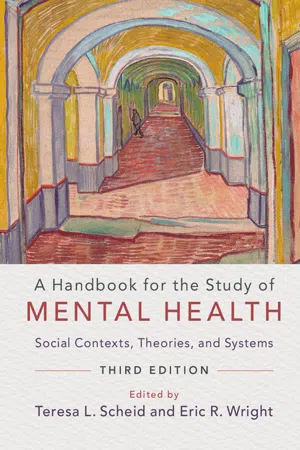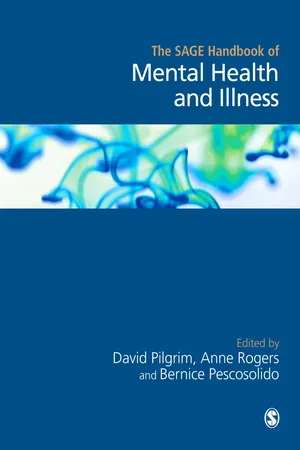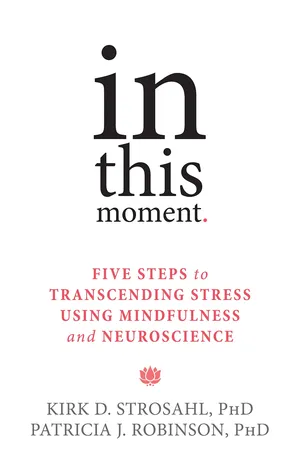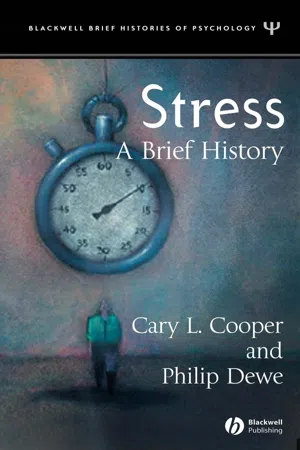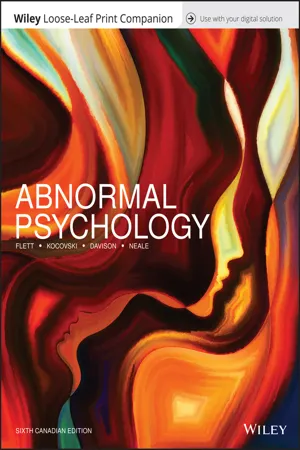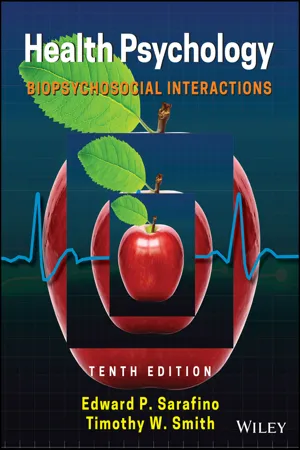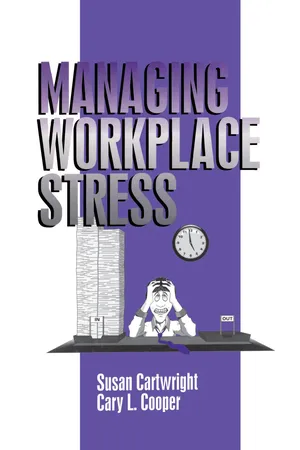Psychology
Daily Hassles
Daily hassles refer to the minor, everyday stressors and irritations that individuals encounter in their lives, such as traffic jams, household chores, or work deadlines. These small but frequent stressors can accumulate and contribute to overall feelings of stress and can have a significant impact on an individual's well-being and mental health.
Written by Perlego with AI-assistance
Related key terms
1 of 5
12 Key excerpts on "Daily Hassles"
- eBook - PDF
- Rose M. Spielman, William J. Jenkins, Marilyn D. Lovett(Authors)
- 2020(Publication Date)
- Openstax(Publisher)
Hassles Potential stressors do not always involve major life events. Daily Hassles—the minor irritations and annoyances that are part of our everyday lives (e.g., rush hour traffic, lost keys, obnoxious coworkers, inclement weather, arguments with friends or family)—can build on one another and leave us just as stressed as life change events ( Figure 14.13) (Kanner, Coyne, Schaefer, & Lazarus, 1981). FIGURE 14.13 Daily commutes, whether (a) on the road or (b) via public transportation, can be hassles that contribute to our feelings of everyday stress. (credit a: modification of work by Jeff Turner; credit b: modification of work by "epSos.de"/Flickr) Researchers have demonstrated that the frequency of Daily Hassles is actually a better predictor of both physical and psychological health than are life change units. In a well-known study of San Francisco residents, the frequency of Daily Hassles was found to be more strongly associated with physical health problems than were life change events (DeLongis, Coyne, Dakof, Folkman, & Lazarus, 1982). In addition, daily minor hassles, especially interpersonal conflicts, often lead to negative and distressed mood states (Bolger, DeLongis, Kessler, & Schilling, 1989). Cyber hassles that occur on social media may represent a modern and evolving source of stress. In one investigation, social media stress was tied to loss of sleep in adolescents, presumably because ruminating about social media caused a physiological stress response that increased arousal (van der Schuur, Baumgartner, & Sumter, 2018). Clearly, Daily Hassles can add up and take a toll on us both emotionally and physically. OCCUPATION-RELATED Stressors Stressors can include situations in which one is frequently exposed to challenging and unpleasant events, such as difficult, demanding, or unsafe working conditions. Although most jobs and occupations can at times be demanding, some are clearly more stressful than others ( Figure 14.14). - eBook - PDF
A Handbook for the Study of Mental Health
Social Contexts, Theories, and Systems
- Teresa L. Scheid, Eric R. Wright(Authors)
- 2017(Publication Date)
- Cambridge University Press(Publisher)
The original Daily Hassles scale has been the subject of some controversy. Complaints that a significant number of items are really measures of other stress concepts, including outcomes such as distress, seem all too valid (Dohrenwend et al., 1984 ). For example, items such as “thoughts about death,” “use of alcohol,” or “being lonely” are measures of distress, some items reflect life events, such as “laid off or out 190 Blair Wheaton and Shirin Montazer of work,” while others reflect standard chronic stress items but have little to do with the stated definition of Daily Hassles as daily minor stresses, e.g., “difficulties getting pregnant,” “overloaded with family responsibilities,” and “prejudice and discrimina-tion from others.” The problem with this measure, then, is that it mixes different types of stress together. Still, the concerns expressed by the concept of Daily Hassles – traffic jams, losing things, waiting in lines, grocery shopping, the weather – articulate the mundane real-ities of daily life that, when experienced cumulatively, could be quite stressful. Daily Hassles are most clearly associated with the exigencies of modern life, rather than issues such as social position and inequality, and thus, may not directly reflect the risk Figure 9.3 A two-way classification of stressors Micro Discr ete Meso Continuous Levels of social context The stress continuum Discrimination Macro Conflictual family environment Divorce Recession 9/11 Hurricane Katrina Neighborhood crime Hurricane Katrina Downsizing Sudden traumas Life change events Daily Hassles Nonevents Chronic stressors Chronic traumatic conditions 9 Studying Stress in the Twenty-First Century 191 of stress exposure that accompanies social disadvantage. The examples above suggest that Daily Hassles span a range of the stress continuum, and on average occupy a mid-dle position as a result – a mixture of ritually repeated or unpredictable, of episodic or more continuous experiences in daily life. - David Pilgrim, Anne Rogers, Bernice Pescosolido, David Pilgrim, Anne Rogers, Bernice Pescosolido(Authors)
- 2010(Publication Date)
- SAGE Publications Ltd(Publisher)
The latter includes daily experiences, such as caring for one’s dog, preparing meals, or being interrupted too often. However, the most widely used measure of Daily Hassles – the Daily Inventory of Stressful Events (DISE: Almeida et al., 2002) – does not employ this distinction. The DISE measure a wide variety of experiences of daily life (e.g., news that one has not been admit-ted to a university, conflicts with co-workers) that include both chronic stressors and acute events, creating some conceptual ambiguity regarding the distinction between Daily Hassles and other types of stressors. In practice, the measurement of Daily Hassles is relatively uncommon outside the context of daily diary research, in which researchers have tended to focus on quotidian chronic stressors, such as role overloads, and conflicts or arguments with others (Bolger et al., 1989). For example, Grzywacz and colleagues (2004) asked subjects whether, in the course of the day, they had an argument or experienced discrimination. The DISE also asked respondents whether anything else occurred “that most people would consider stressful” (Grzywacz et al., 2004) during the day, an approach that accounts for the criticism that measures of Daily Hassles confound stressors and outcomes (Dohrenwend et al., 1984). These concerns notwithstanding, the concept of Daily Hassles captures an important category of stressors – the minor aggravations and unexpected difficulties that constitute such a pervasive feature of modern life. In addition, when researchers select items with the intention of avoiding those that measure life events or chronic strains, research suggests that Daily Hassles make an independent contribution to variation in distress STRESSORS AND EXPERIENCED STRESS 155 (Serido et al., 2004; Wheaton, 1999), although this contribution is relatively small in comparison to the impact of life events and chronic strains.- eBook - PDF
- Robinson, Patricia J., Strosahl, Kirk D.(Authors)
- 2014(Publication Date)
- New Harbinger Publications(Publisher)
Inside this sanctuary, you can be aware of the stress around you without being consumed by it. You can be aware of your emotions, thoughts, memo- ries, or physical symptoms without having to struggle with them. You can love yourself for who you are, warts and all. You can connect with what matters to you in your life and act with a sense of a personal mission. As you read the concepts in this book and practice the skills we outline, consider this your quest to turn yourself from Velcro, where every little stress sticks to you, even when you try to fling it off, to Teflon, where stress just slides off you without any effort at all! Stress, Mindfulness, and Neuroscience 11 Daily Hassles: It’s the Small Stuff That Gets You! While it is true that big life events, such as divorce, bankruptcy, or the death of spouse, have a negative impact on health and mental well- being, it appears that the small daily stresses of everyday living exert an even greater influence in the long term (Holm and Holroyd 1992). In this book, we sometimes use the phrase “Daily Hassles” to describe this kind of daily stress. One long-term study of Daily Hassles showed that they had a direct negative impact on physical health problems nearly a decade later, particularly among people with high levels of stress (Piazza et al. 2013). Daily Hassles function somewhat like the ancient Chinese practice of water torture: one drop of water on your head doesn’t seem like much until you’ve spent days on end experiencing one drop of water at a time. A key factor to consider is that dealing with Daily Hassles is really a lifestyle issue, and therefore antistress measures need to be a basic part of your daily routine. The good news is, you don’t need to use heroic coping measures, as might be the case with a major life event. Instead, you need to have a reliable set of daily go-to strategies that help you transcend daily stress and recharge your batteries. - eBook - PDF
- Douglas Bernstein, , , (Authors)
- 2015(Publication Date)
- Cengage Learning EMEA(Publisher)
Physical or sexual assault, military combat, natural disasters, terrorist attacks, and accidents fall into this category (e.g., Besser et al., 2014; Grimm et al., 2014). Life changes and strains include divorce, illness in the family, difficulties at work, moving to a new house, and other circumstances that create demands to which people must ad-just (see Table 12.2). Chronic stressors —those that continue over a long period of time— include such circumstances as living under the threat of terrorism, having a serious illness (or caring for someone who does), being unable to earn a decent income, living in a high-crime urban neighborhood, being the victim of discrimination, and even enduring years of academic pressure (e.g., Fuller-Rowell, Evans, & Ong, 2012; Lederbogen et al., 2011; Lovell, Moss, & Wetherell, 2012). Finally, Daily Hassles involve irritations, pressures, and annoyances that may not be major stressors by themselves but whose effects add up to become significant (Almeida, 2005; Evans & Wener, 2006). The frustrations of daily com-muting in heavy traffic, for example, can become so intense for some drivers that they display a pattern of aggression called “road rage.” Measuring Stressors Which stressors are the most harmful? To study stress more precisely, psychologists have tried to measure the impact of particular stressors. In 1967, Thomas Holmes and Richard Rahe (pronounced “ray”) pioneered the effort to find a standard way of mea-suring the stress in a person’s life. Working on the assumption that both positive and negative changes produce stress, they asked a large number of people to rate—in terms of life-change units (LCUs) —the amount of change and demand for adjustment caused by events such as divorcing, being fired, retiring, losing a loved one, or becoming pregnant. On the basis of these ratings, Holmes and Rahe (1967) created the Social Readjustment Rating Scale ( SRRS). - eBook - PDF
Stress
A Brief History
- Cary Cooper, Philip J. Dewe(Authors)
- 2008(Publication Date)
- Wiley-Blackwell(Publisher)
It is these day-to-day events ‘‘that ultimately should have proximal significance for health outcomes and whose accumulative impact, therefore, should also be assessed’’ (Kanner et al., 1981, p.3). The primary objective in constructing the Hassles Scale was to capture a broad range of everyday life difficulties as perceived by the individual, rather than to attempt to generate purely objective environmental events (Lazarus, 1984). Daily Hassles were defined as: ‘‘experiences and conditions of daily living that have been appraised as salient and harmful to the endorser’s well-being’’ (Lazarus, 1984a, p.376). This definition places hassles firmly as a 46 THE TWENTIETH CENTURY: FROM THE 1950s TO RICHARD LAZARUS subjective experience, with the meanings associated with them leading them to be remembered. Scale events (Kanner et al., 1981) generated by the researchers and colleagues, included for example, misplacing and losing things, ‘concerns about getting credit, smoking too much, nonfamily members living in your house, not enough money for food, not getting enough sleep, and too many things to do. Daily uplifts, however, were defined, as: ‘‘experiences and conditions of daily living that have been appraised as salient and positive or favourable to the endorser’s well-being’’ (Lazarus, 1984a, p.376). Scale events (Kanner et al., 1981) included, for example, being lucky, feeling healthy, being efficient, making a friend, and relaxing. The scale was made up of 117 hassles and 135 uplifts. It was possible using the scales scoring procedures to calculate the frequency, cumulated sever-ity, and intensity of the events. The testing of the scale led the authors to conclude that the pattern of results offer ‘‘a surpris-ingly robust case’’ that ‘‘Daily Hassles provide a more direct and broader estimate of stress than major life events’’ and are ‘‘more strongly associated with adaptational outcomes than are life events’’ (Kanner et al., 1981, p.20). - eBook - PDF
- Gordon L. Flett, Nancy L. Kocovski, Gerald C. Davison, John M. Neale(Authors)
- 2018(Publication Date)
- Wiley(Publisher)
iStock.com/Stouffer Second, the original Hassles Scale was developed for use with a middle-aged community sample, and as such, it contained Daily Hassles that may not be relevant to other populations. Researchers have addressed this problem by developing Daily Hassles tailored to the experiences of specific groups of people. Canadian researchers have developed hassles measures for uni- versity and college students (Kohn, Lafreniere, & Gurevich, 1990) and for adolescents (Kohn & Milrose, 1993). The Brief College Hassles Scale (BCHS; Blankstein, Flett, and Koledin, 1991) is shown in Figure 9.4. It taps three main themes: (1) academic hassles (e.g., academic bureaucracy, academic deadlines); (2) interpersonal hassles (e.g., contact with boyfriend/girlfriend, relationship with mother and/or father); and (3) financial hassles and physical adjustment, but measures of Daily Hassles are often better than measures of major life events at predicting adjustment problems (DeLongis, Coyne, Dakof, Folkman, & Lazarus, 1982; Kanner, Coyne, Schaefer, & Lazarus, 1981). Researchers have responded to two problems that plagued earlier research on Daily Hassles. First, the original Hassles Scale (Kanner et al., 1981) has been described as “contaminated” because it included items that could be construed as a symp- tom of distress (e.g., feeling tired) rather than a hassle per se. These symptoms were removed in a subsequent version of the Hassles Scale created by Anita DeLongis, who conducts research at the University of British Columbia (see DeLongis, Folkman, & Lazarus, 1988). FIGURE 9.4 The Brief College Hassles Scale. 9.1 The Nature and Experience of Stress 253 254 CHAPTER 9 Stress-Related Disorders and Health Psychology research apply to the specific group being studied and should not be overgeneralized to other groups. We have already noted that two measures of Daily Hassles have been created to assess the specific daily stressors expe- rienced by college and university students. - eBook - ePub
Fifty Years of the Research and theory of R.s. Lazarus
An Analysis of Historical and Perennial Issues
- Richard S. Lazarus(Author)
- 2013(Publication Date)
- Psychology Press(Publisher)
hassles are proximal events and, therefore, tell us more about stress and coping than the much rarer major life events, remains sound. When major life events play an important role, they often do so by virtue of the changes they exact in Daily Hassles, as the article reprinted here pointed out. But a person who endorses an experience or situation as a hassle has already appraised it as stressful, which makes hassles proximal rather than distal.Proximal means psychologically immediate or personal—that is, mediated by an appraisal by the individual of its significance (see House, 1981 ; Jessor, 1981 ). It refers to events that are subjectively judged to be stressful and signal a personal stake in what is happening. These events have a closer tie to an individual’s emotions than distal events do, the personal meaning of which is less psychologically immediate and often quite variable from one individual to another.Thus, divorce or death of a loved one as a life event may be a disaster for one person but a blessing for another, making the designation of the event distal—without an immediate and clear personal significance.Another important principle has to do with the health-related effects of Daily Hassles that are central to the person’s identity and life commitments, or alternatively, peripheral and relatively impersonal. We presented some challenging, but not definitive, evidence that central hassles have a greater significance for health and well being than do peripheral hassles (Gruen, Folkman, & Lazarus, 1989 - eBook - ePub
- Michael Eysenck(Author)
- 2014(Publication Date)
- Psychology Press(Publisher)
Neuroticism assessed at the age of 16 predicted the number of stressful life events experienced 27 years later. Thus, individuals with a susceptibility to stress have an increased likelihood of experiencing stressful life events. Key Terms Life events predominantly negative occurrences (and often of major consequence) that typically produce increased stress levels. Hassles the irritating challenges of everyday life that can increase stress levels. Second, the impact of any given life event varies considerably depending on the individual’s particular circumstances. For example, marital separation is likely to be less stressful for someone who has already established an intimate relationship with someone else. Third, it has too often been assumed that any major life event can help to produce almost any type of illness. However, there are more specific effects. For example, anxious patients are more likely than depressed patients to have experienced danger events (involving future threats) than depressed patients. In contrast, depressed patients are more likely to have experienced loss events (involving past losses such as death of a loved one) (Finlay-Jones & Brown, 1981). Hassles What are the main categories into which our Daily Hassles and stressors fall? Almeida (2005) found that 37% involved danger (e.g., potential for future loss), 30% involved some kind of loss (e.g., of money), and 27% were frustrations or events outside the individual’s control. People reported more psychological distress and physical symptoms on days when they encountered hassles than on stress-free days. However, college-educated adults had less psychological distress and fewer physical symptoms than less-educated ones in spite of experiencing more daily stressors - eBook - PDF
Health Psychology
Biopsychosocial Interactions
- Edward P. Sarafino, Timothy W. Smith(Authors)
- 2021(Publication Date)
- Wiley(Publisher)
Newer, interview-based measures have been developed that derive from the ground- breaking, basic work of Holmes and Rahe (1967) but are intended to address these weaknesses (Anderson, Wethington, & Kamarck, 2011; Monroe, 2008). Table 3.5 describes three other life event scales for adults intended to address weaknesses with the SRRS; other instruments have been developed to measure life events in children and adolescents (Coddington, 1972; Johnson, 1986). Daily Hassles If we consider the sources of stress we experience in a typical week or month, lesser events will quite likely come to mind, as when we give a speech, misplace our keys during a busy day, or have our quiet disrupted by a loud party next door. These are called Daily Hassles. Some people experience more Daily Hassles than others do. Richard Lazarus and his associates developed a scale to measure people’s experiences with day-to-day unpleasant or potentially harmful events (Kanner et al., 1981). This instrument—called the Hassles Scale—lists 117 of these events that range from minor annoyances, such as “silly practical mistakes,” to major problems or difficulties, such as “not enough money for food.” Respondents indicate which hassles occurred in the past month and rate each event as “somewhat,” “moderately,” or “extremely” severe. Because the researchers felt that having desirable experiences may make hassles more bearable and reduce their impact on health, they also developed the Uplifts Scale, which lists 135 events that bring peace, satisfaction, or joy. The researchers tested 100 middle-aged adults monthly over a 9-month period and identified the most frequently occurring items. For hassles, they included “concerns about weight,” “health of a family member,” “too many things to do,” and “mis- placing or losing things”; for uplifts, they included “relat- ing well to your spouse or lover” and “completing a task.” Are hassles and uplifts related to health? Studies have examined this issue. - eBook - PDF
- Susan Cartwright, Cary L. Cooper(Authors)
- 1996(Publication Date)
- SAGE Publications, Inc(Publisher)
MANAGING EVERYDAY STRESSFUL EVENT S ^ V lo t of the problem s w e encounter bot h a t work an d i n our personal live s ar e ones tha t w e create ourselves . Typically , suc h problems occu r becaus e w e faile d t o manage ou r tim e effectively ; were unable to say no' 7 and agreed to do something we didn't wan t to do or were unable to do in the time available; or totally mishandled a situation , upse t others , los t control , or got angry . Frequently , th e outcome of such situation s cause s stres s and anxiet y an d leave s u s feeling bad o r inadequate . In thi s section , we focu s o n th e numerous hassle s tha t we ar e al l likely t o encounter durin g a da y a t work—hassles tha t emanat e primarily from our desk or work situation. Individually, these hassles may often appear trivial or insignificant to those around us and whe n related to others frequently soun d more like moans than problems. However, their cumulative effect is often stressful , and they represent the type of hassles that can be overcome and resolved only by personal action. We will begin with travel, a major sourc e of hassle that start s before w e eve n ge t to work. Then , we wil l move o n t o discuss time management, interruptions, and managing workload. 102 Everyday Stressful Events 103 TRAVEL STRES S Travelling is the ruin of all happiness/' Fanny Burney , 1833-189 8 7:30 a.m. Th e day starts badly. You forgot to set the alarm and you'r e running late . You have a n importan t clien t meetin g a t 9:3 0 a.m., and yo u intended t o get into the offic e earl y to rerea d the papers in preparation fo r th e meeting. You have to sto p for ga s o n th e wa y in , which furthe r delay s you . Traffi c i s heavy an d ther e i s roadwor k o n th e highway . Yo u fin d yourself i n a line of slow-movin g traffic , an d it' s a t leas t 4 miles unti l th e nex t exit . A s you'r e crawlin g along , yo u suddenly become aware that you have developed a flat tire. - eBook - PDF
Health Psychology
Biopsychosocial Interactions
- Edward P. Sarafino, Timothy W. Smith, David B. King, Anita De Longis(Authors)
- 2020(Publication Date)
- Wiley(Publisher)
P., & Ewing, M. (1999). The Hassles Assessment Scale for Students in College: Measuring the frequency and unpleasantness of and dwelling on stressful events. Journal of American College Health, 48, 75–83. 110 Chapter 3 Stress—Its Meaning Impact, and Sources Whether people appraise events as stressful depends on factors that relate to the person and to the situation. Factors of the person include intellectual, motiva- tional, and personality characteristics, such as the person’s self-esteem and belief system. With regard to situational factors, events tend to be appraised as stressful if they involve strong demands, are imminent, are undesirable and uncontrolla- ble, involve major life transitions, or occur at an unexpected time in the lifespan. Stressors produce strain in the person’s biological, psychological, and social sys- tems. Emergency situations evoke a physiological fight-or-flight reaction, by which the organism prepares to attack the threat or flee. When stress is strong and pro- longed, the physiological reaction goes through three stages: the alarm reaction, the stage of resistance, and the stage of exhaustion. This series of reactions is called the general adaptation syndrome. According to Selye, continuously high levels of stress can make the person vulnerable to diseases of adaptation, including ulcers and high blood pressure. The overall total of physiological reaction to stressors, sometimes called allostatic load, may be a more important influence on health than the magnitude of the response to any single stressor. Factors that affect allostatic load include exposure to stressors, reactivity, recovery, and restoration. Stress is linked to psychosocial processes. It can impair cognitive functioning, reduce people’s helping behaviour, and increase their aggressiveness. Various emotions can accompany stress—these emotions include fear, anxiety, depres- sion, and anger.
Index pages curate the most relevant extracts from our library of academic textbooks. They’ve been created using an in-house natural language model (NLM), each adding context and meaning to key research topics.

